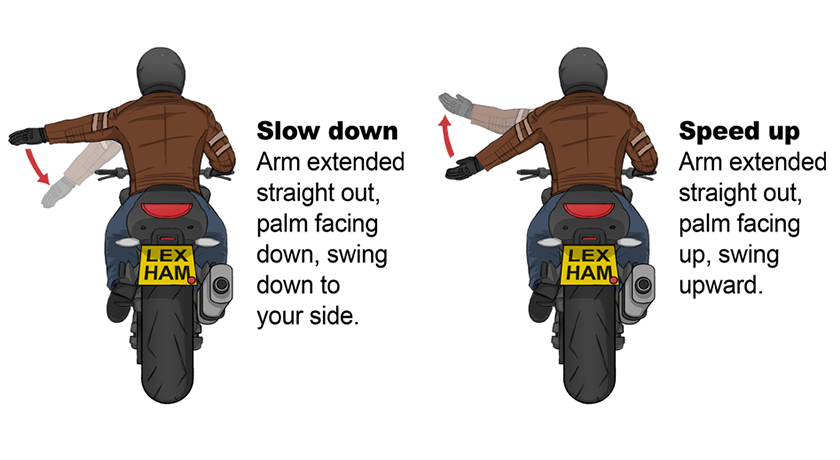As an experienced biker, one of the most essential skills to master is the art of using motorcycle hand signals. These non-verbal cues are integral for safe and effective communication amongst riders, especially when riding in a group or in areas where audio communication is challenging.
Why Use Motorcycle Hand Signals?
Motorcycle hand signals are a simple and universal way of conveying information to other bikers or motorists on the road. They can help you:
- Indicate your intentions, such as turning, slowing down, or stopping
- Alert others of potential hazards, such as road conditions, animals, or police
- Coordinate your movements, such as changing lanes, overtaking, or forming a riding formation
- Express your appreciation, such as thanking someone for letting you pass or acknowledging a friendly gesture
Using motorcycle hand signals can enhance your safety, visibility, and confidence on the road. They can also foster a sense of camaraderie and respect among fellow riders.
How to Use Motorcycle Hand Signals?
Motorcycle hand signals are usually performed with the left hand, as the right hand is used for operating the throttle and brake. However, some signals may require the use of both hands, such as indicating a stop or a rest stop. In such cases, you should ensure that you have enough time and space to safely perform the signal without compromising your control of the bike.
To use motorcycle hand signals effectively, you should follow these tips:
- Make sure your signals are clear and visible to others. Avoid wearing gloves or clothing that may obscure your hand gestures.
- Use your signals in advance of your actions. For example, signal a turn before you reach the intersection, not after you have already started turning.
- Keep your signals brief and consistent. Don't wave your hand excessively or change your signal midway. This may confuse or distract others on the road.
- Be aware of the context and the culture of the area you are riding in. Some signals may have different meanings or interpretations in different regions or countries. For example, the thumbs up sign may be considered rude or offensive in some parts of the world.
- Don't rely solely on your signals. Always check your mirrors, blind spots, and traffic conditions before making any maneuvers. Remember that not everyone may be familiar with or attentive to your signals.
What are the Common Motorcycle Hand Signals?
There are many different motorcycle hand signals that bikers use for various purposes. However, some of the most common and widely recognized ones are:
Right Turn
A raised left arm with the elbow fully bent, forming a 90-degree angle, indicates a right turn. This signal is crucial for alerting fellow bikers and motorists of your intended direction, enhancing safety on the road.
Left Turn
A left arm extended straight out horizontally denotes a left turn. This signal is similar to the right turn signal, except that the arm is not bent at the elbow.
Slow Down
Extending your left arm out straight and facing downward denotes slowing down. It’s a vital signal for maintaining speed discipline within a biking group or alerting following vehicles.
Speed Up
A left arm extended straight out with a swinging upward motion signifies speeding up—a necessary cue during overtaking or increasing pace in response to traffic flow.
Take Lead/Single File/Stagger
These formations are communicated through specific hand gestures ensuring organized movement, optimal use of road space, and enhanced visibility.
- To indicate taking the lead position, point your left index finger upward and move it in a circular motion.
- To signal a single file formation, point your left index finger upward and keep it still.
- To signal a staggered formation, extend your left arm out with the index and middle fingers pointing diagonally up and down.
Stop/Need Gas/Rest Stop
Indicating stops or breaks is equally important to ensure that all riders can prepare accordingly and maintain group cohesion during rides.
- To signal a stop, raise your left arm and form a fist with your hand.
- To signal a need for gas, point your left index finger to your fuel tank.
- To signal a rest stop, extend your left arm and bend it at the elbow, then open and close your hand repeatedly.
Hazard
Pointing your left foot or hand to the ground indicates a hazard on the road, such as a pothole, debris, or oil. This signal is useful for warning other riders to avoid or maneuver around the obstacle.
Police
Tapping the top of your helmet with your left hand indicates the presence of police ahead. This signal is helpful for alerting other riders to slow down or be cautious.
Thank You/Wave
Waving your left hand or giving a thumbs up sign is a common way of expressing gratitude or acknowledgment to other bikers or motorists. This signal can also be used as a friendly greeting or a sign of solidarity.
Conclusion
Motorcycle hand signals are an essential part of biking etiquette and communication. By mastering these signals, you can improve your safety, coordination, and enjoyment on the road. Always remember to use your signals appropriately and respectfully, and to respect the signals of others. Happy riding!

Comments (0)
Please login to join the discussion
Be the first to comment on this article!
Share your thoughts and start the discussion